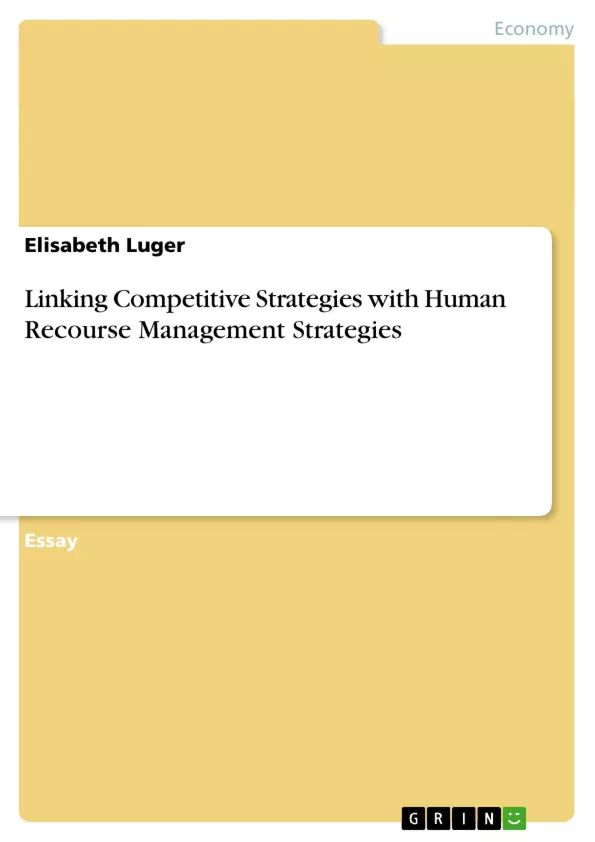“I believe we are in a war for talent. […] Let's face it — talented employees are the
lifeblood of any successful organization. To remain competitive in the global
marketplace, governments must do more to recruit the best and brightest, and then
RETAIN them.” (Janice Lachance, 2000)
…and exactly that is the upcoming issue in NPOs as the rising financial problems
often result from high turnover rates, unprofessional staff and unsatisfied volunteers.
This article will help managers of NPOs to understand how to link their organisation’s
strategy to their HR strategy in a way that their volunteer’s and staff’s behaviour
match the organisation’s long term goals.
Keywords
Nonprofit organisation, Human Recourse Strategy, Competitive Advantage, Human
Recourse Practices, Best Practice Approach and Contingency Approach.
Inhaltsverzeichnis (Table of Contents)
- Executive Summary
- Introduction
- The Article's Content
- Universalistic Approach
- Contingency Approach
- Implementation
- Conclusion
- Bibliography
Zielsetzung und Themenschwerpunkte (Objectives and Key Themes)
This article aims to explain how organizations can link their competitive strategies with their Human Resource (HR) strategies to ensure that their employees' behavior aligns with the organization's long-term goals. It specifically focuses on the challenges of nonprofit organizations (NPOs) and how they can use HR strategies to combat issues like high turnover rates and attract volunteers.
- The importance of linking competitive strategies with HR strategies
- The application of HR strategies within the context of NPOs
- The role of employee behavior in achieving organizational goals
- The comparison and contrast of the Universalistic and Contingency approaches to HR strategy
- The impact of Porter's competitive advantage model on HR practices
Zusammenfassung der Kapitel (Chapter Summaries)
- Executive Summary: This section introduces the importance of talent management in NPOs and highlights the issue of high turnover rates, unprofessional staff, and unsatisfied volunteers. It emphasizes the article's aim to guide NPO managers in linking their organizational strategy with HR practices.
- Introduction: This chapter outlines the background of the article, highlighting the authors' focus on combining Porter's work on competitive advantage with research on employee behavior. It emphasizes the need for long-term strategies in NPOs and the importance of attracting and retaining both volunteers and paid staff.
- The Article's Content: This section presents the two main approaches to HR strategy: the Universalistic or "Best Practice" approach and the Contingency Approach. The "Best Practice" approach suggests that certain HR practices consistently lead to high organizational performance, while the Contingency Approach argues that effective HR practices are contingent on the specific context and organizational strategy.
- Implementation: This chapter delves into the application of HR strategies to achieve competitive advantage, particularly focusing on the three dominant competitive strategies: cost reduction, innovation, and quality improvement. It presents a typology of HR practices and their relationship to each strategy, along with case studies illustrating these principles.
Schlüsselwörter (Keywords)
The key terms and concepts explored in this article include nonprofit organizations (NPOs), human resource strategy, competitive advantage, human resource practices, best practice approach, contingency approach, employee behavior, organizational strategy, and talent management.
- Quote paper
- Elisabeth Luger (Author), 2004, Linking Competitive Strategies with Human Recourse Management Strategies, Munich, GRIN Verlag, https://www.grin.com/document/21771



